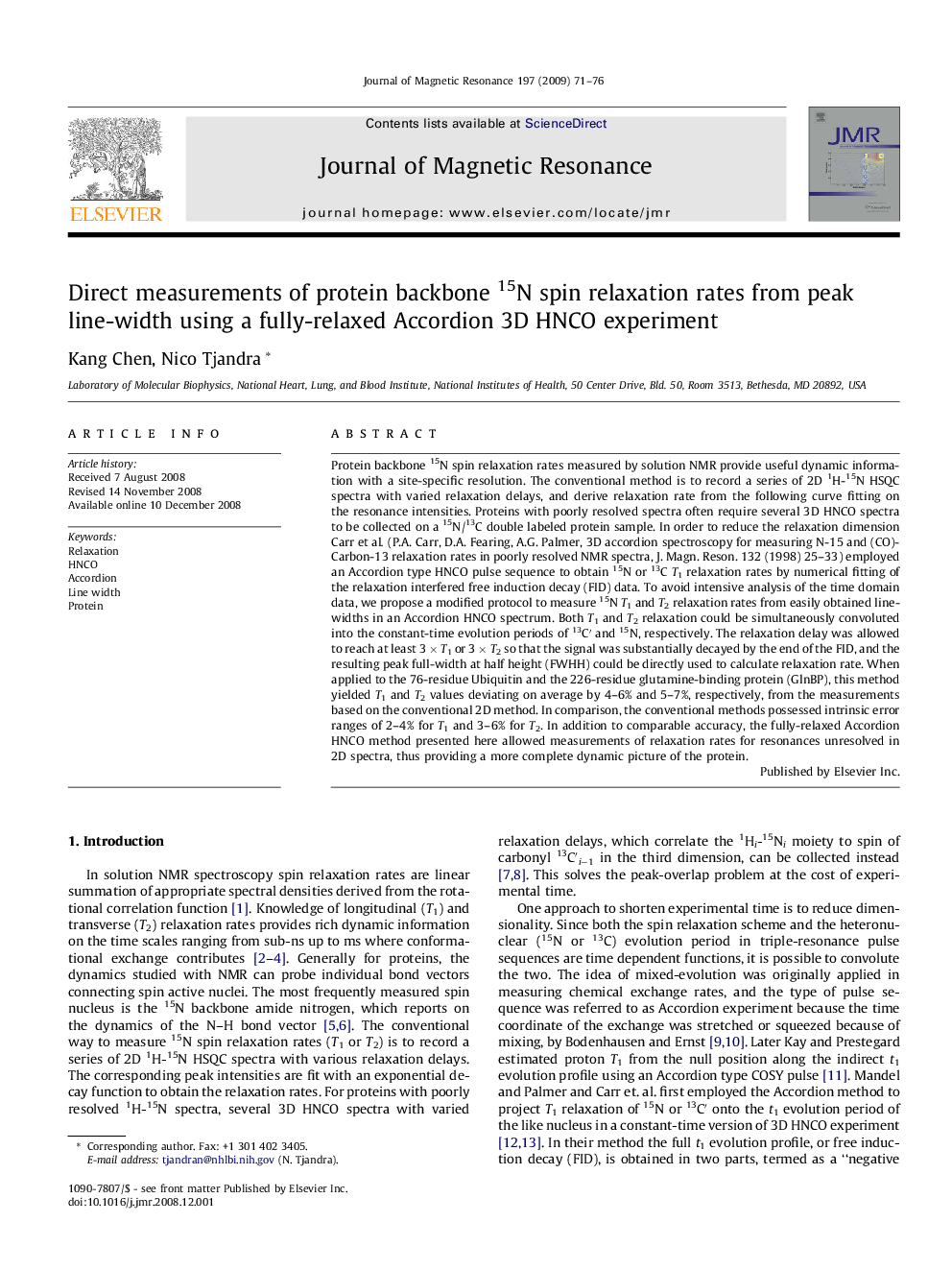| Article ID | Journal | Published Year | Pages | File Type |
|---|---|---|---|---|
| 5407110 | Journal of Magnetic Resonance | 2009 | 6 Pages |
Abstract
Protein backbone 15N spin relaxation rates measured by solution NMR provide useful dynamic information with a site-specific resolution. The conventional method is to record a series of 2D 1H-15N HSQC spectra with varied relaxation delays, and derive relaxation rate from the following curve fitting on the resonance intensities. Proteins with poorly resolved spectra often require several 3D HNCO spectra to be collected on a 15N/13C double labeled protein sample. In order to reduce the relaxation dimension Carr et al. (P.A. Carr, D.A. Fearing, A.G. Palmer, 3D accordion spectroscopy for measuring N-15 and (CO)-Carbon-13 relaxation rates in poorly resolved NMR spectra, J. Magn. Reson. 132 (1998) 25-33) employed an Accordion type HNCO pulse sequence to obtain 15N or 13C T1 relaxation rates by numerical fitting of the relaxation interfered free induction decay (FID) data. To avoid intensive analysis of the time domain data, we propose a modified protocol to measure 15N T1 and T2 relaxation rates from easily obtained line-widths in an Accordion HNCO spectrum. Both T1 and T2 relaxation could be simultaneously convoluted into the constant-time evolution periods of 13Câ² and 15N, respectively. The relaxation delay was allowed to reach at least 3Â ÃÂ T1 or 3Â ÃÂ T2 so that the signal was substantially decayed by the end of the FID, and the resulting peak full-width at half height (FWHH) could be directly used to calculate relaxation rate. When applied to the 76-residue Ubiquitin and the 226-residue glutamine-binding protein (GlnBP), this method yielded T1 and T2 values deviating on average by 4-6% and 5-7%, respectively, from the measurements based on the conventional 2D method. In comparison, the conventional methods possessed intrinsic error ranges of 2-4% for T1 and 3-6% for T2. In addition to comparable accuracy, the fully-relaxed Accordion HNCO method presented here allowed measurements of relaxation rates for resonances unresolved in 2D spectra, thus providing a more complete dynamic picture of the protein.
Related Topics
Physical Sciences and Engineering
Chemistry
Physical and Theoretical Chemistry
Authors
Kang Chen, Nico Tjandra,
